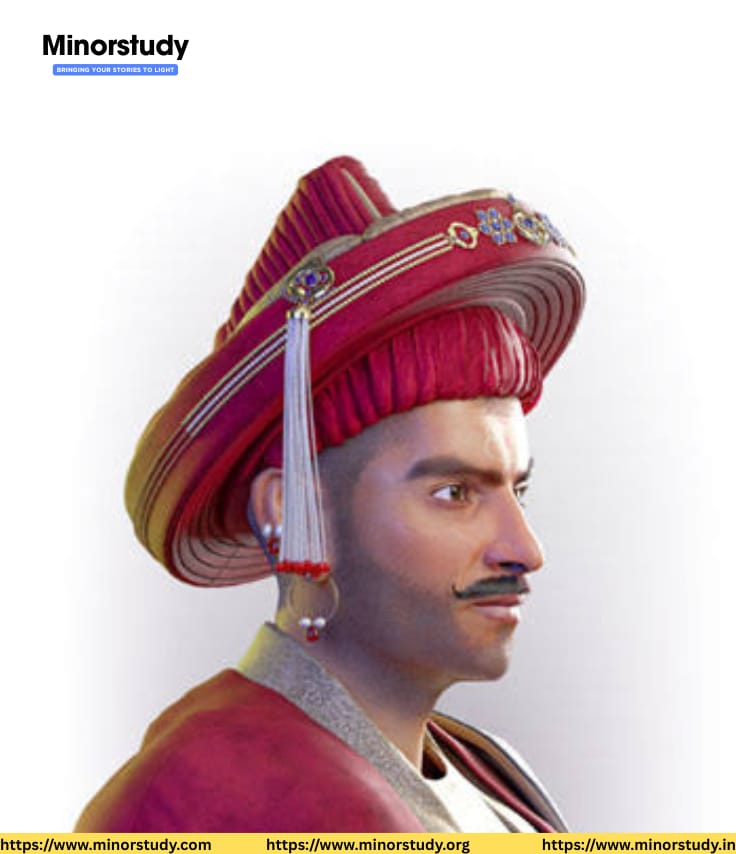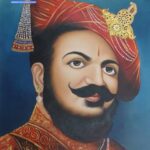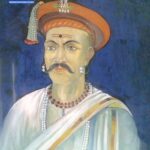🌟 Introduction: Who Was Peshwa Bajirao?
Peshwa Bajirao I, often hailed as the greatest cavalry general in Indian history, was not just a brilliant military strategist but a visionary who shaped the destiny of the Maratha Empire during the 18th century. Born on August 18, 1700, into the prestigious Bhat family, Bajirao I served as the Peshwa (Prime Minister) under Chhatrapati Shahu Maharaj from 1720 to 1740.
- 🌟 Introduction: Who Was Peshwa Bajirao?
- 🏹 History of Peshwa Bajirao
- 📌 7 Heroic Facts About Peshwa Bajirao
- 📜 Timeline of Key Events
- 🙋♂️ Frequently Asked Questions (FAQs)
- ❓ Why is Peshwa Bajirao considered great?
- ❓ Did Peshwa Bajirao really love Mastani?
- ❓ Was Bajirao only a warrior?
- ❓ Where is Bajirao buried?
- ❓ Is the movie Bajirao Mastani historically accurate?
- 🔍 Significance in Indian History
- 🎊 Observance and Remembering Bajirao Today
- 💬 Wishing in Honor of Bajirao
- 🧭 Why Is Bajirao Important in Our Life?
- 🏛️ Important Points to Remember
- ❤️ Conclusion: Daily Life Impacts and Societal Relevance
His legacy is not merely of conquest, but of uniting a fragmented Indian subcontinent against Mughal dominance. His persona blends power, patriotism, and pathos—making him a heroic yet deeply human character.
🏹 History of Peshwa Bajirao
Full Name: Bajirao Ballal Bhat
Born: August 18, 1700, in Sinnar (Maharashtra)
Father: Balaji Vishwanath (First Peshwa of the Marathas)
Reign as Peshwa: 1720 – 1740
Died: April 28, 1740, in Raverkhedi
Appointed Peshwa at just 20 years old, Bajirao led the Maratha army into more than 41 major battles, losing none—an unmatched feat in Indian history. He believed in expanding Maratha power northward and dreamt of a united Hindu dominion or ‘Hindavi Swarajya’.
His military leadership and guerrilla tactics helped Marathas defeat the Mughals, Nizam of Hyderabad, and several other regional powers, allowing Maratha sovereignty to stretch from the Godavari to the Yamuna.
📌 7 Heroic Facts About Peshwa Bajirao
Undefeated in Battle: Bajirao I is credited with a 100% win rate in over 41 battles, including major ones like Palkhed (1728), Bhopal (1737), and Delhi (1737).
Youngest Peshwa: At just 20, he became the youngest Peshwa in Maratha history, showing extraordinary administrative and strategic brilliance early on.
Father of Guerrilla Warfare Tactics: He used lightning-fast cavalry movements and surprise tactics, baffling even the best Mughal commanders.
Love Beyond Boundaries: His controversial love story with Mastani, a half-Muslim, half-Rajput princess, challenged 18th-century orthodoxy and left an immortal mark on Indian cultural memory.
Expanded the Maratha Empire: Under his rule, Maratha influence extended beyond the Vindhyas, entering Delhi, Malwa, Bundelkhand, and even parts of Bengal.
Unified Hindu States: He formed alliances with Rajputs and Bundelas, standing as a symbol of Hindu unity during foreign aggression.
Death in Battle Spirit: Bajirao died in 1740 at just 39 due to heatstroke while still on a military campaign, proving he was a warrior till the end.
📜 Timeline of Key Events
| Year | Event |
|---|---|
| 1700 | Bajirao I born in Sinnar, Maharashtra |
| 1720 | Appointed as Peshwa by Chhatrapati Shahu Maharaj |
| 1728 | Defeated Nizam-ul-Mulk at the Battle of Palkhed |
| 1731 | Victory in Malwa consolidates Maratha northern expansion |
| 1737 | Marches to Delhi; humiliates Mughal Emperor |
| 1739 | Strengthens Maratha position post-Nadir Shah’s invasion |
| 1740 | Dies in Raverkhedi at age 39 |
🙋♂️ Frequently Asked Questions (FAQs)
❓ Why is Peshwa Bajirao considered great?
He was undefeated in over 41 battles, introduced revolutionary military tactics, and expanded the Maratha Empire to unprecedented territories.
❓ Did Peshwa Bajirao really love Mastani?
Yes. Their romance was real and controversial. Mastani was his second wife, and despite societal backlash, Bajirao stood by her till death.
❓ Was Bajirao only a warrior?
No. He was also an efficient administrator and visionary leader, introducing policies for finance, alliance-building, and statecraft.
❓ Where is Bajirao buried?
He is cremated at Raverkhedi (present-day Madhya Pradesh), where a memorial stands in his honor.
❓ Is the movie Bajirao Mastani historically accurate?
While emotionally rich, the movie takes creative liberties. However, the essence of Bajirao’s bravery and love for Mastani is accurately captured.
🔍 Significance in Indian History
Peshwa Bajirao I wasn’t just a military leader—he was a nation builder. At a time when Mughal influence was waning, he used the momentum to rally fragmented Indian kingdoms and plant the Maratha flag in North India. He also:
Championed Hindavi Swarajya (self-rule)
Defended Indian traditions and culture
Protected temples and pilgrims
Elevated the power and prestige of the Maratha Confederacy
🎊 Observance and Remembering Bajirao Today
Bajirao’s memory lives on:
In schools, as part of Indian history syllabi
In movies, plays, and TV shows
Tourist spots like Shaniwar Wada, Pune (his residence), and Raverkhedi (his samadhi)
Annual memorial events by Maratha organizations across Maharashtra
💬 Wishing in Honor of Bajirao
If you wish to honor Bajirao on his birth anniversary (August 18) or death anniversary (April 28), here are heartfelt wishes:
🔸 “Salute to the warrior who never lost a battle – Bajirao, your courage inspires generations!”
🔸 “On this day, we remember the lion of the Marathas. Jai Bajirao!”
🔸 “Let’s remember the man who made Delhi tremble – Bajirao, the pride of Bharat!”
🧭 Why Is Bajirao Important in Our Life?
Even today, Bajirao’s life teaches us:
Leadership is not about title, but action and vision.
Love can challenge social norms and still be pure.
Courage and conviction can change the course of history.
Unity in diversity is the need of every age.
In our daily struggles, remembering a leader like Bajirao instills us with a sense of purpose, duty, and honor.
🏛️ Important Points to Remember
Born in 1700, died in 1740 – only 39 years of life, yet left an immortal legacy.
Fought 41 battles without defeat.
Architect of Maratha expansion in northern India.
Believed in “swift and sudden strikes” – a strategy ahead of its time.
His love for Mastani symbolizes strength in emotional conviction.
❤️ Conclusion: Daily Life Impacts and Societal Relevance
In today’s world of instant gratification and moral ambiguity, the legacy of Peshwa Bajirao reminds us of enduring values:
Be strategic but stay grounded.
Value loyalty and love equally.
Work towards a larger cause, beyond personal gains.
Defend your culture, but not with hatred—do it with dignity.
His battle cries echo even now in the hearts of leaders, soldiers, and citizens who wish to stand for their people, culture, and homeland. Bajirao is not just a historical figure—he’s a symbol of purpose, perseverance, and pride.
🧠 Did You Know?
🔹 Bajirao rode more than 1000 km in less than a week to surprise Delhi’s army in 1737—a feat considered legendary even today!
🔹 His son, Balaji Baji Rao (Nana Saheb), became the next Peshwa and continued his father’s legacy.








